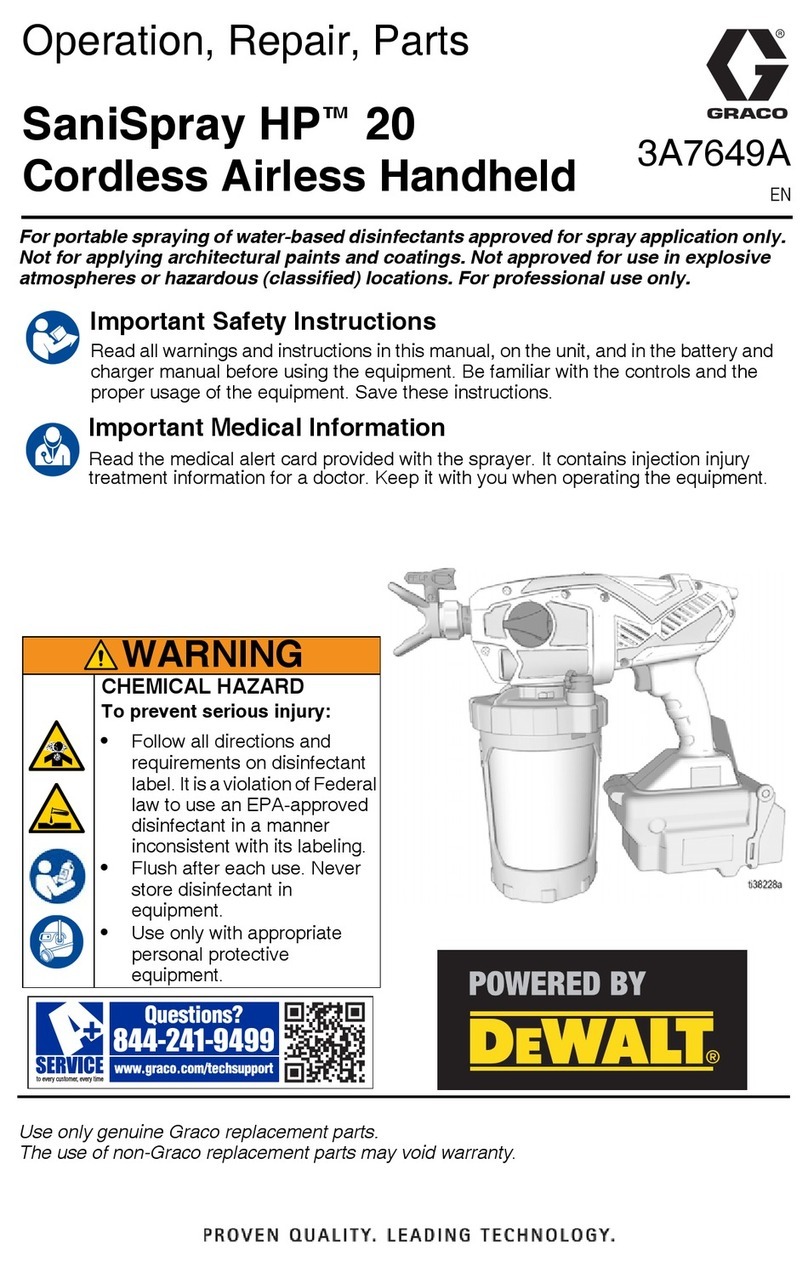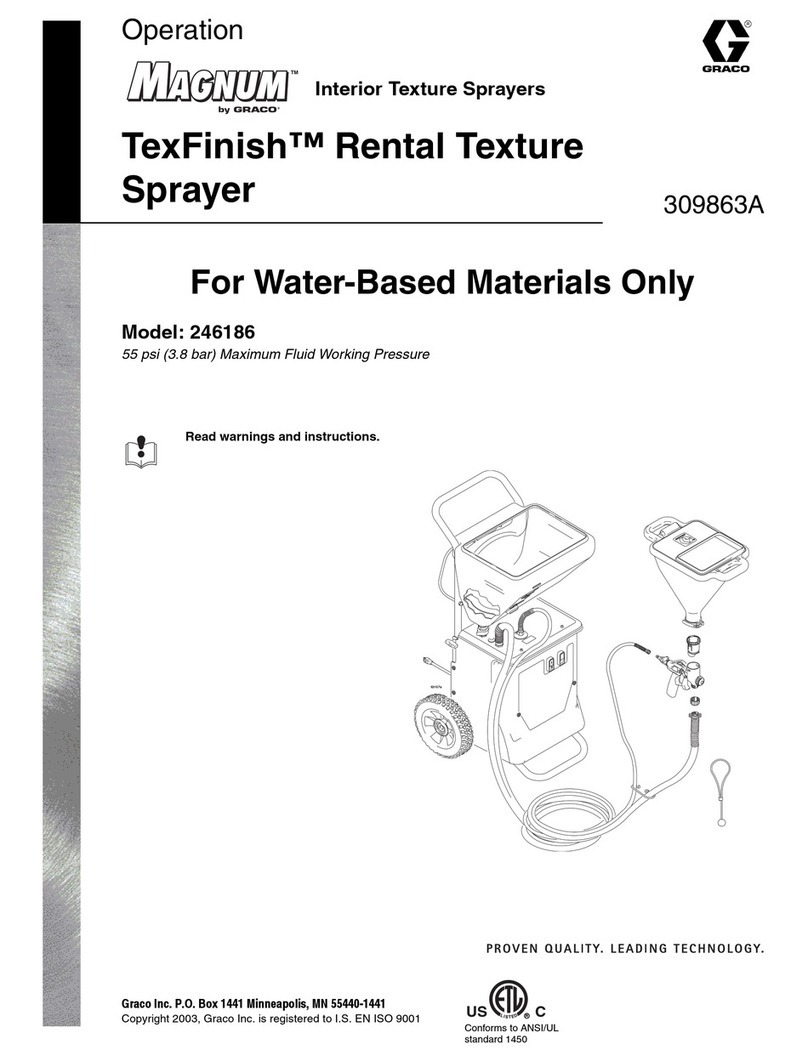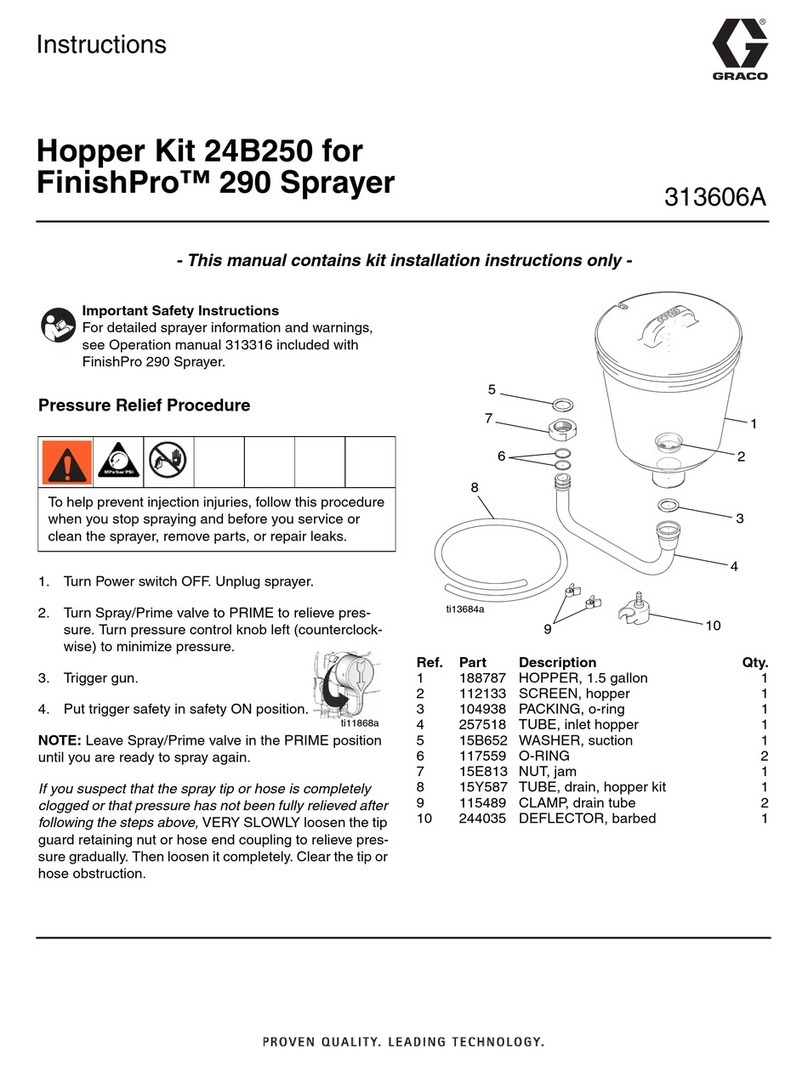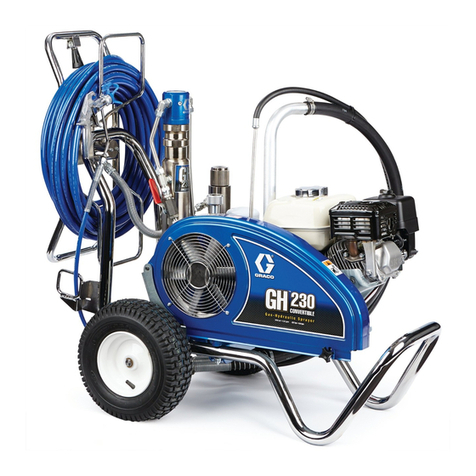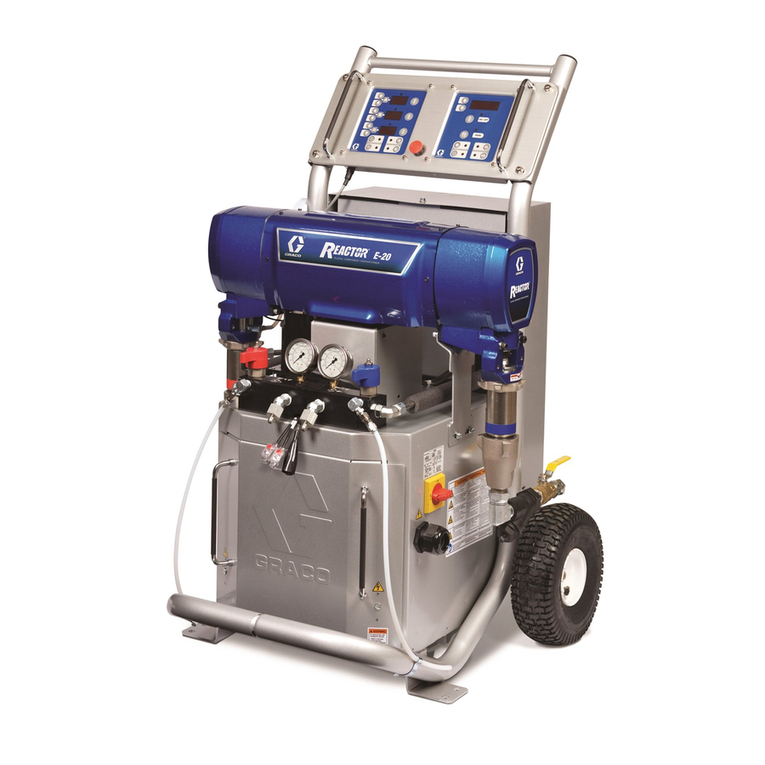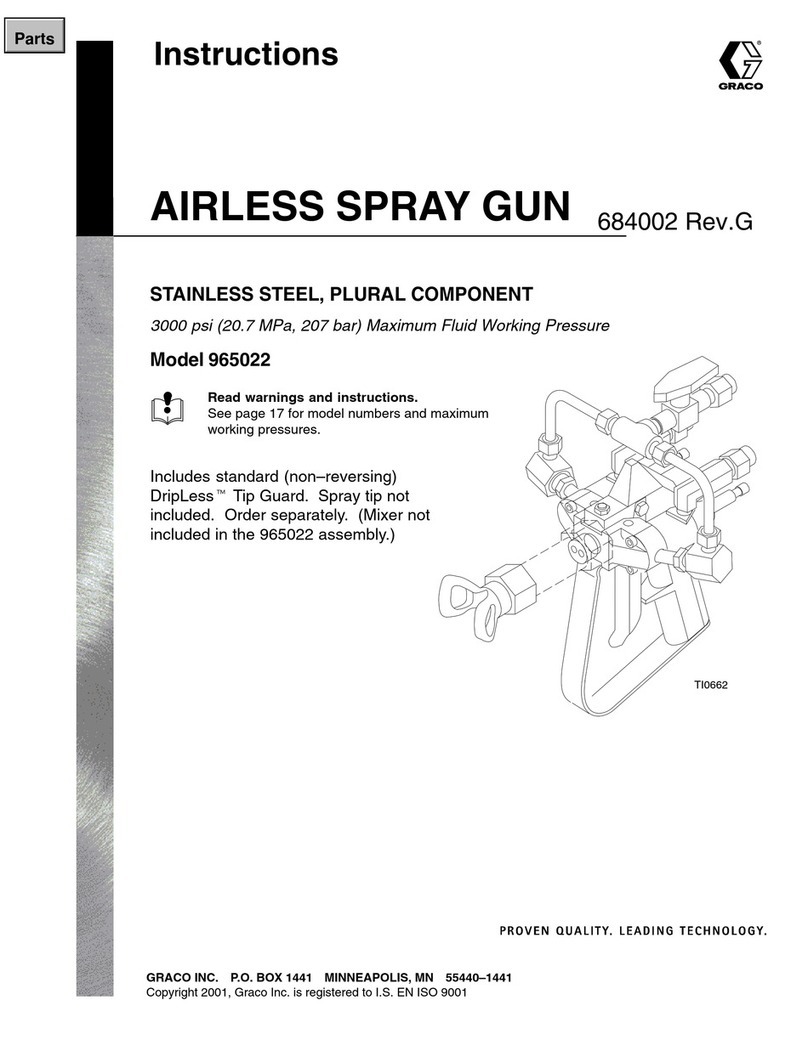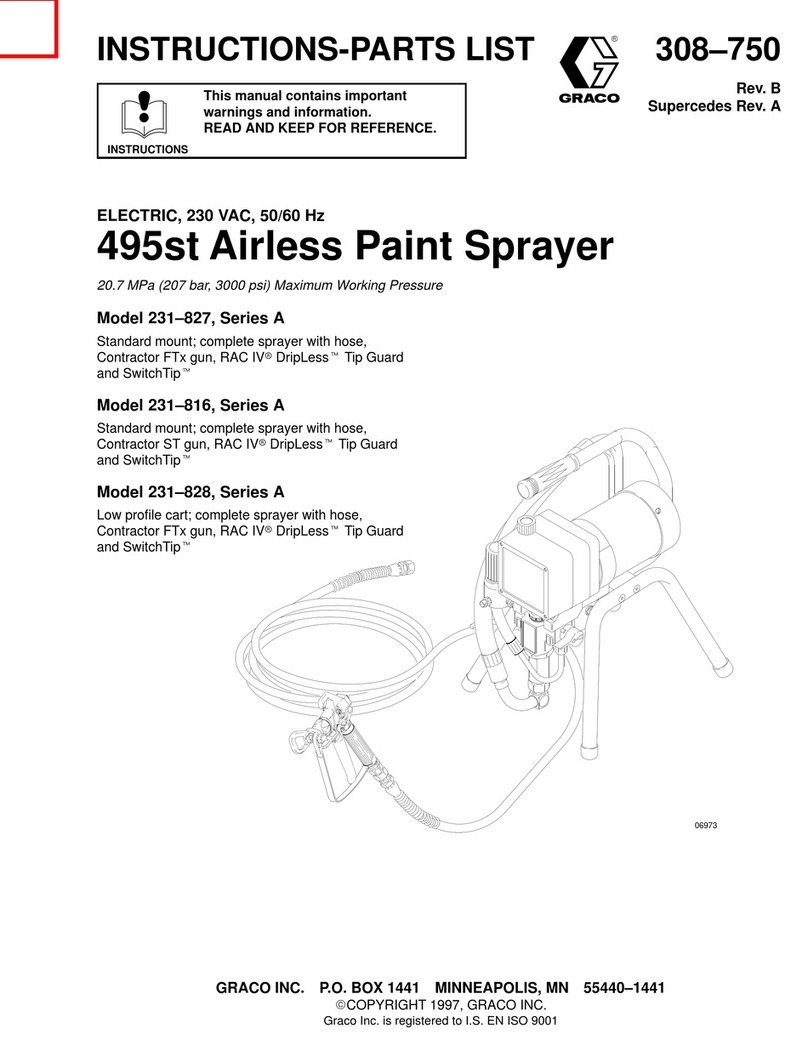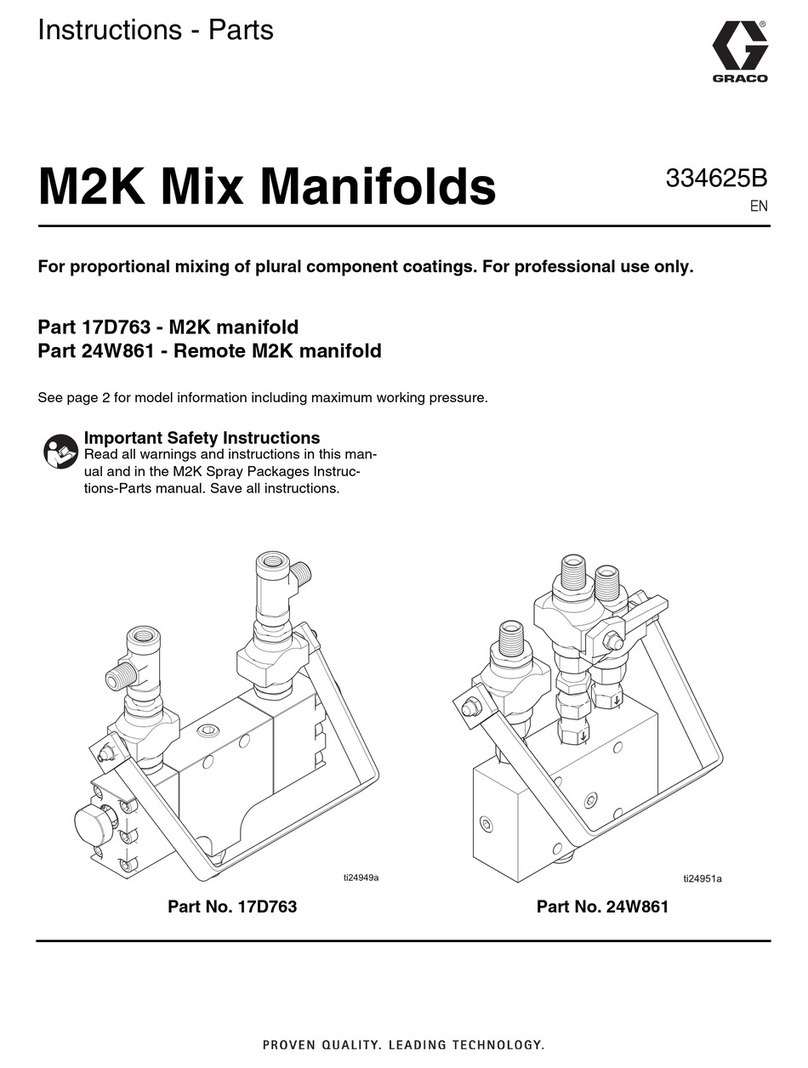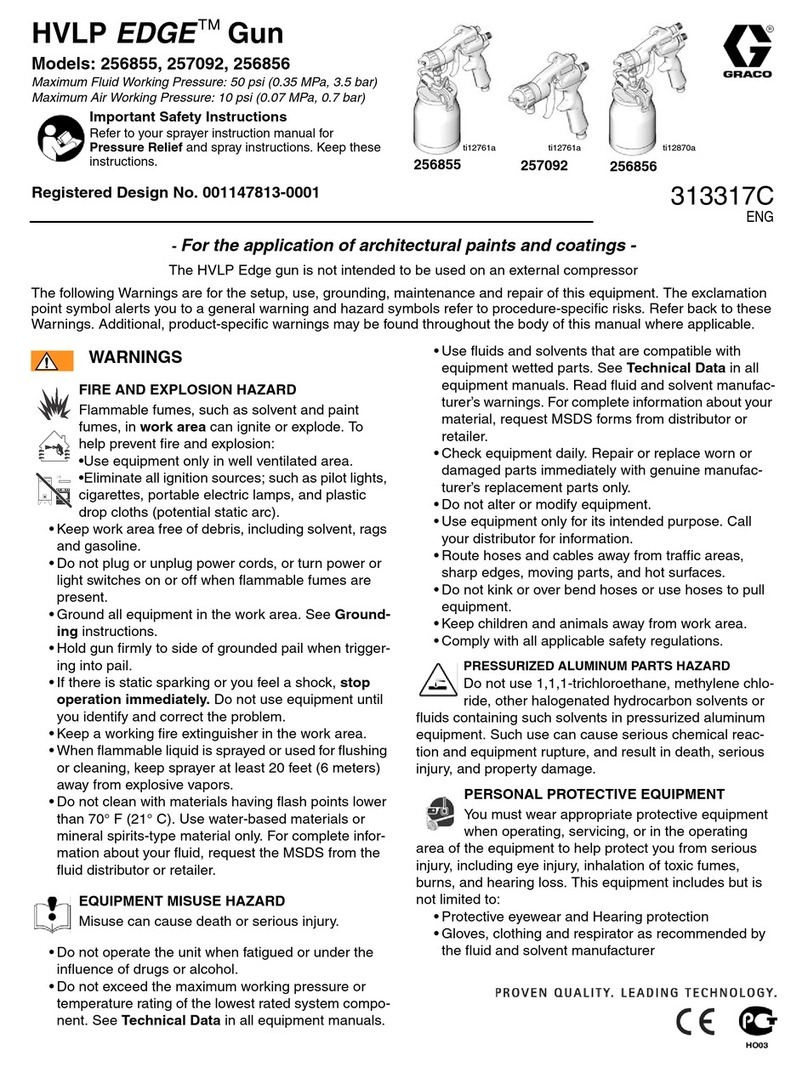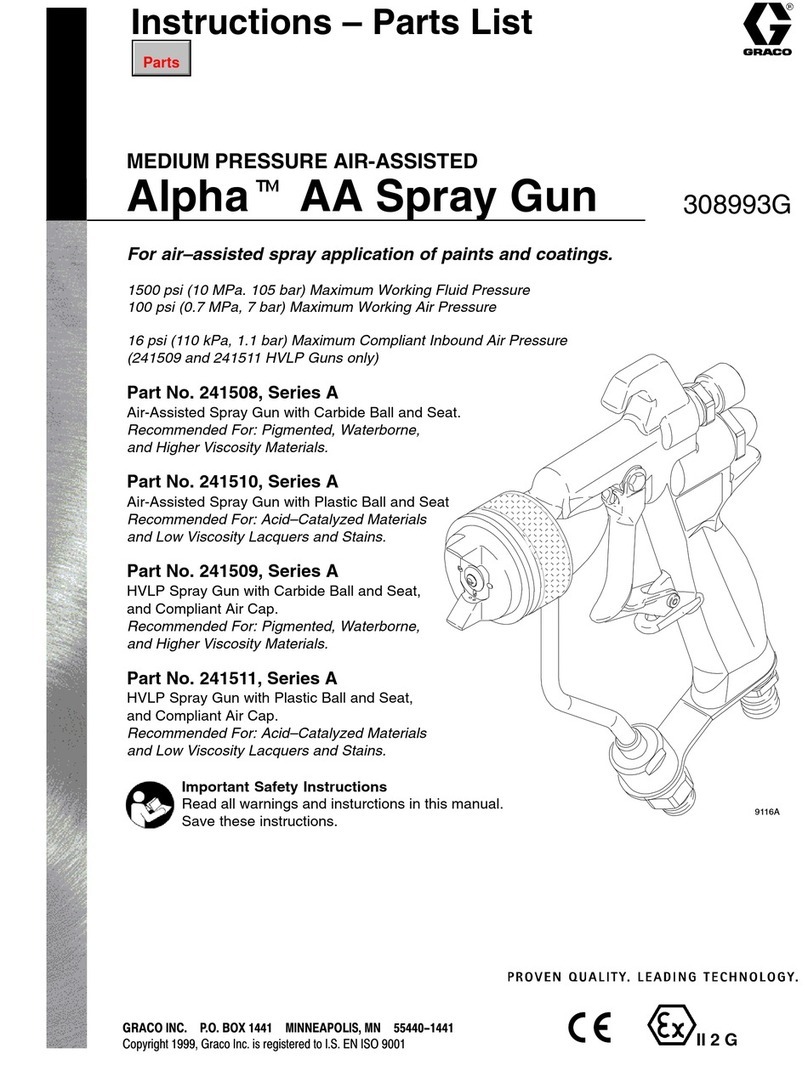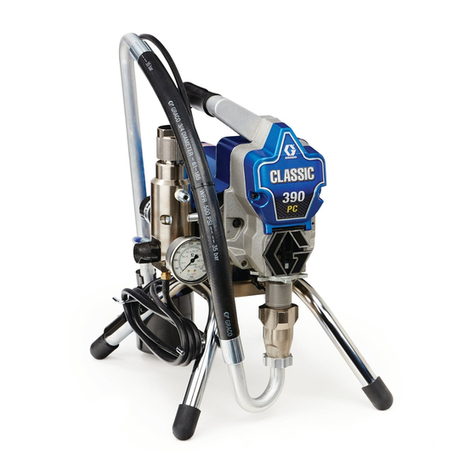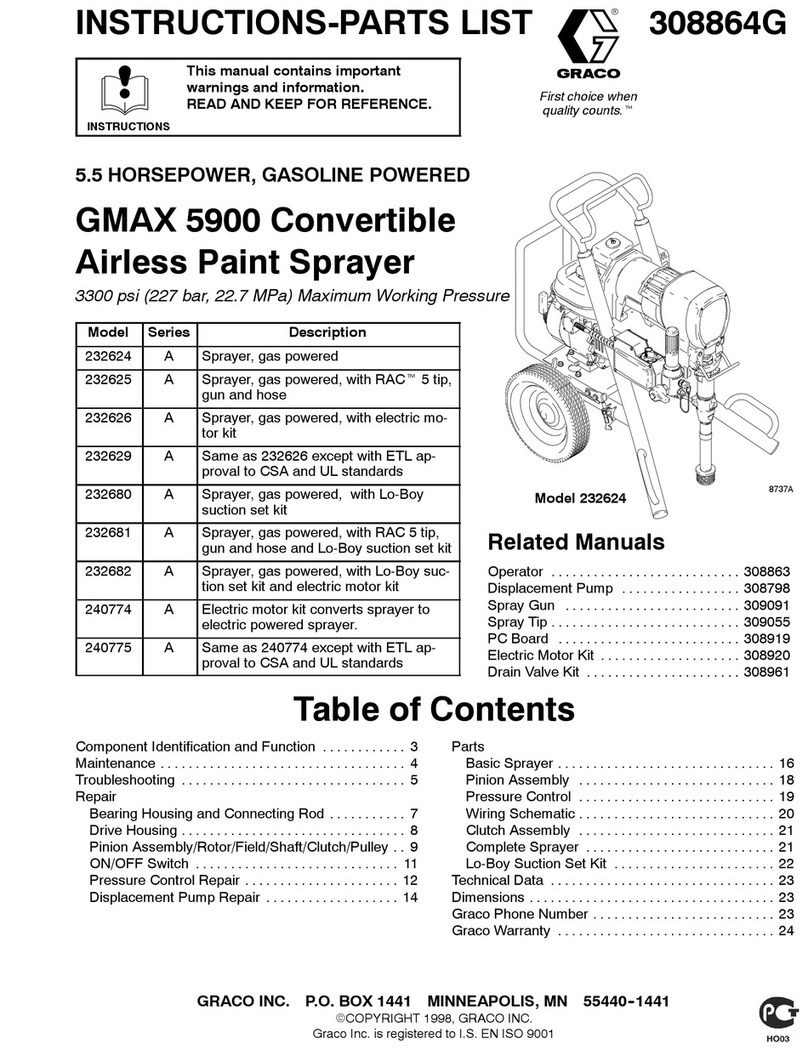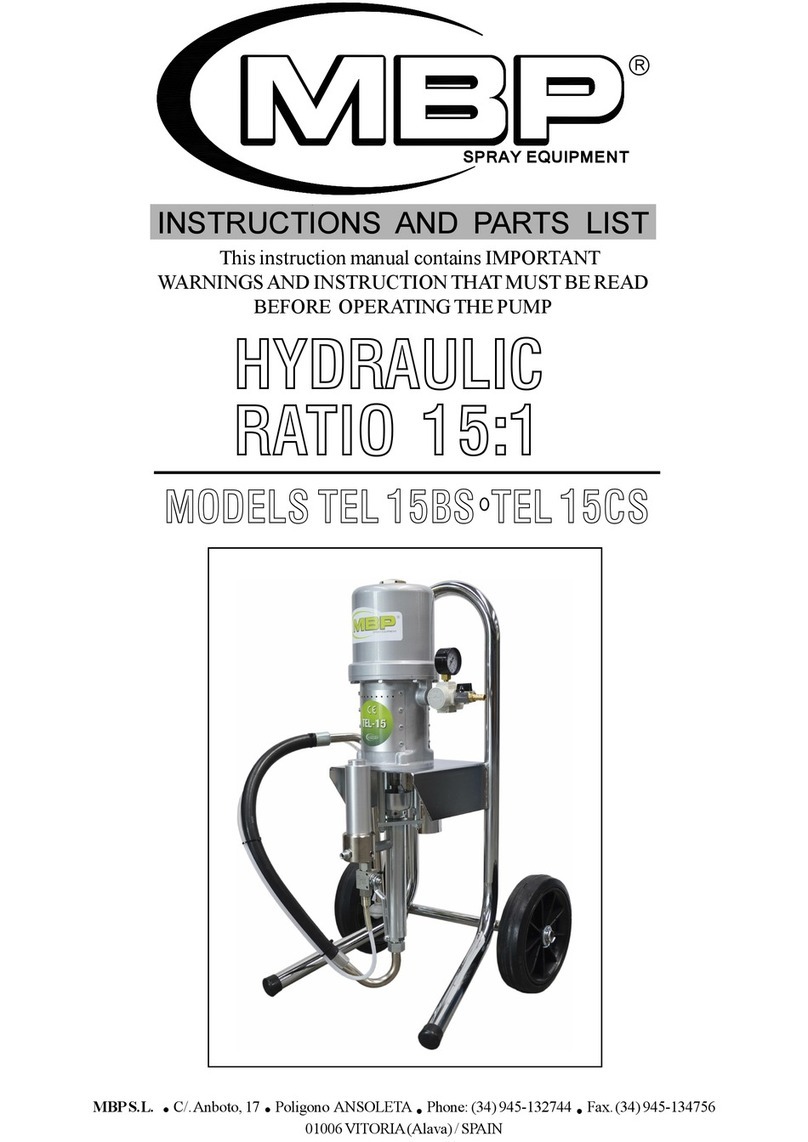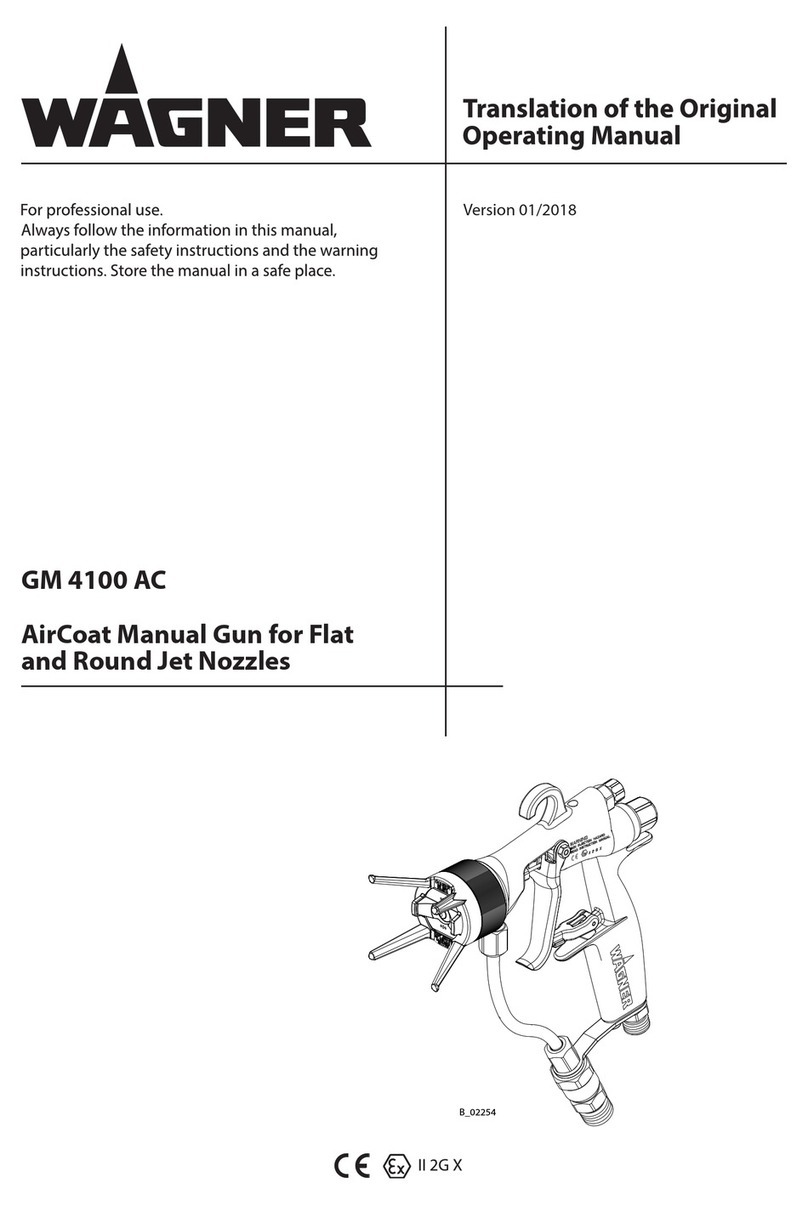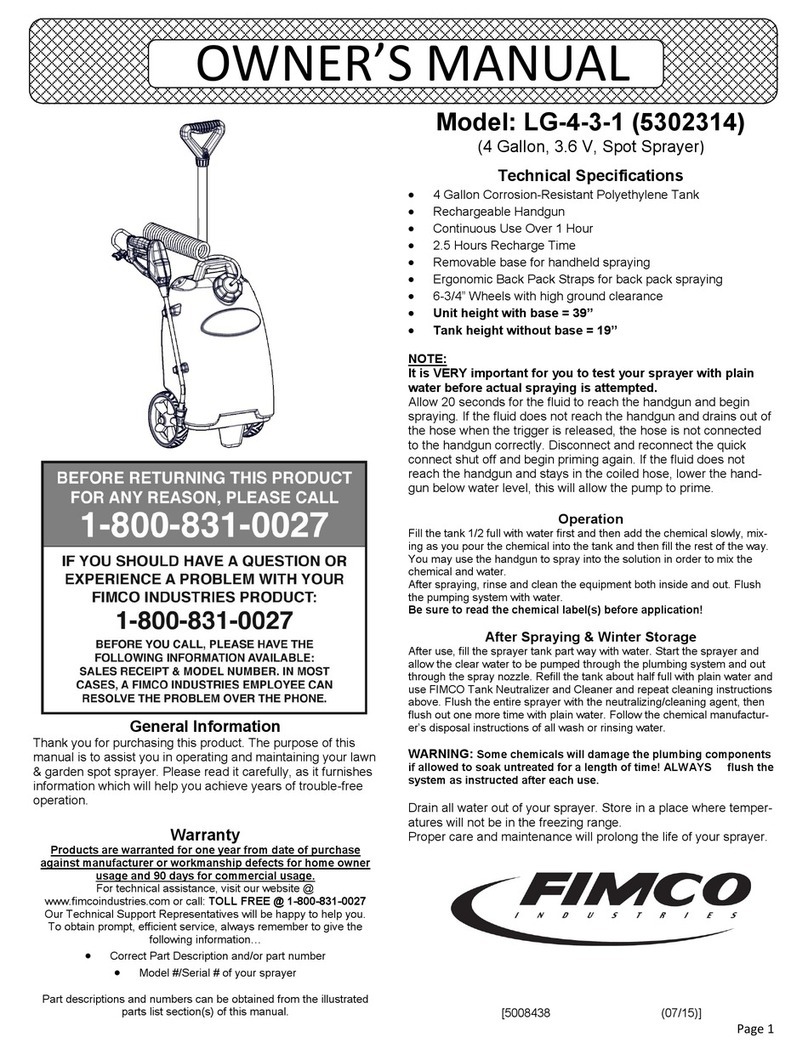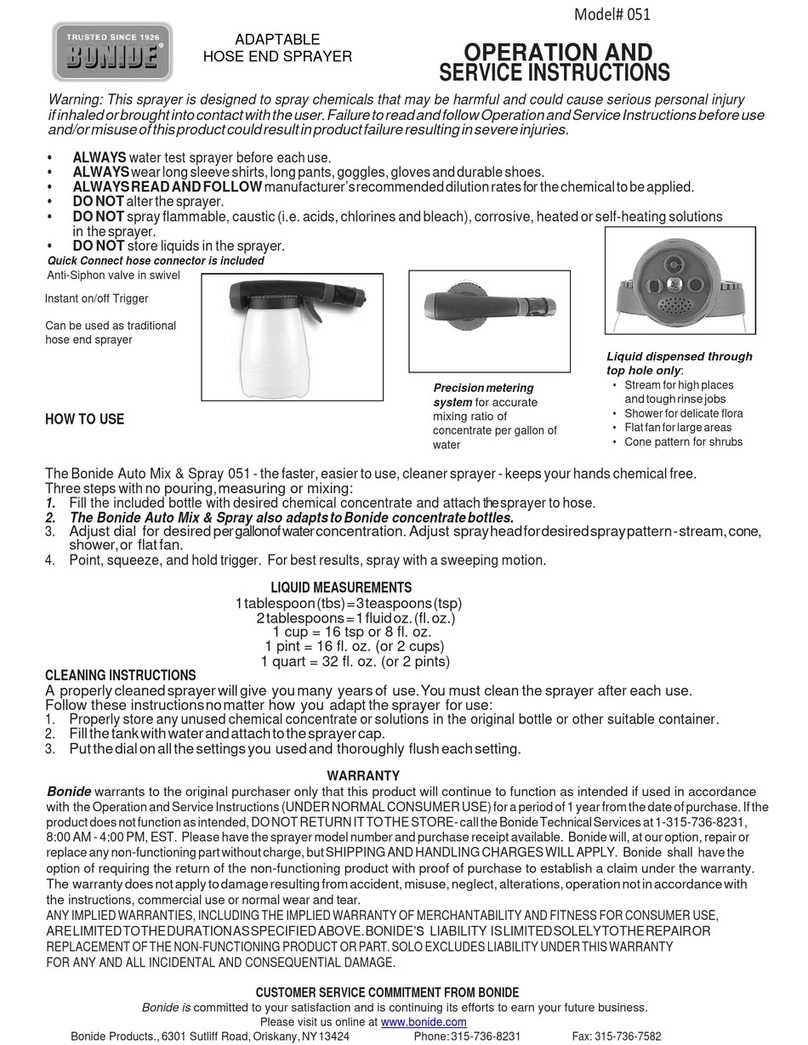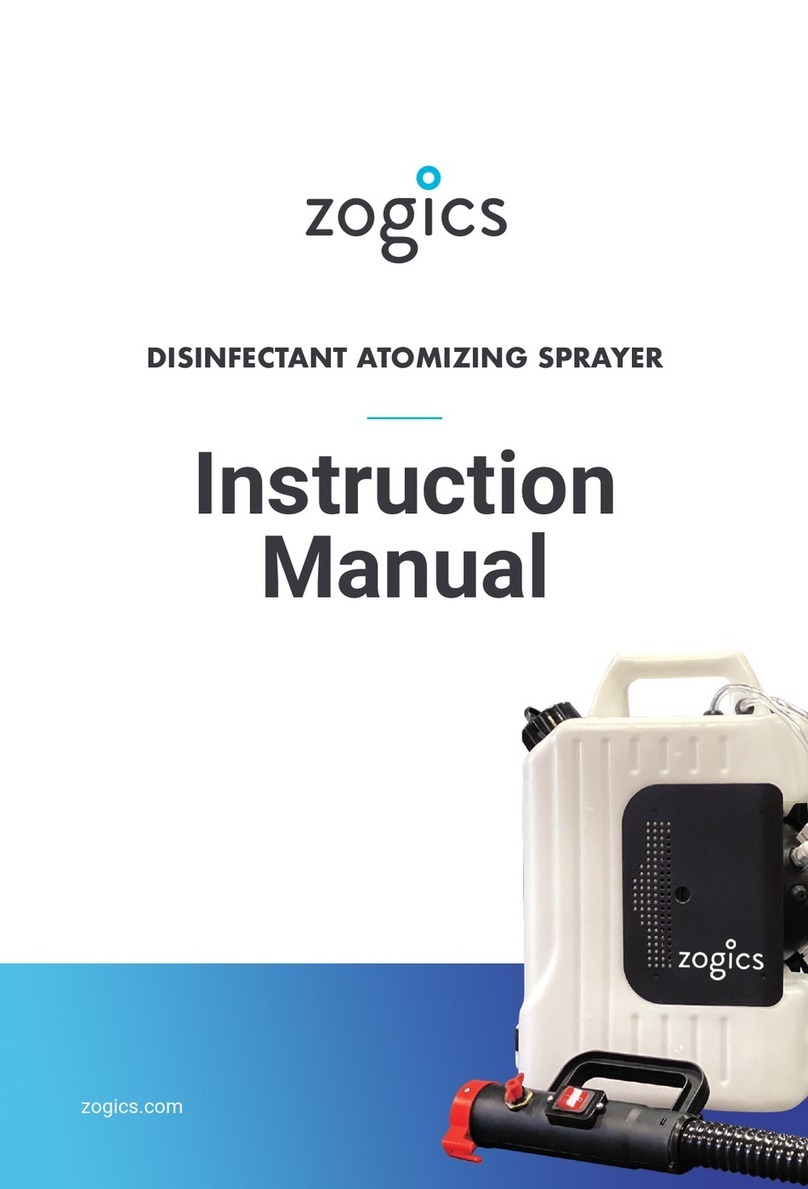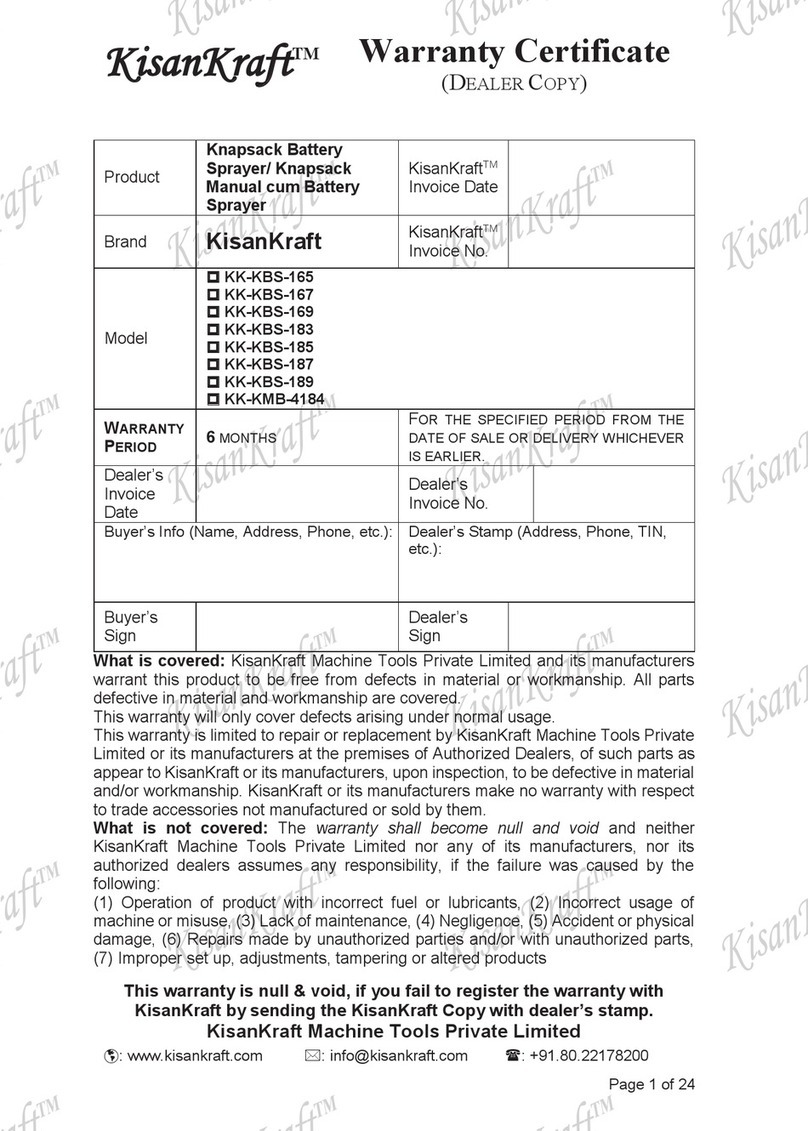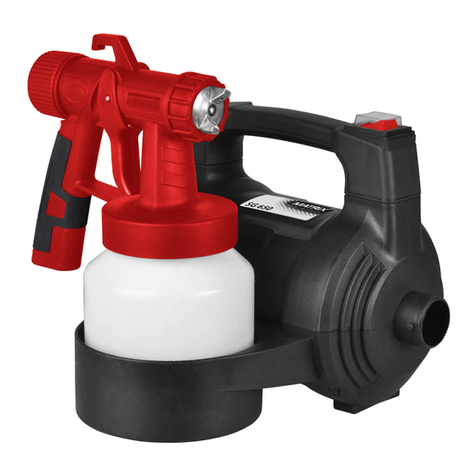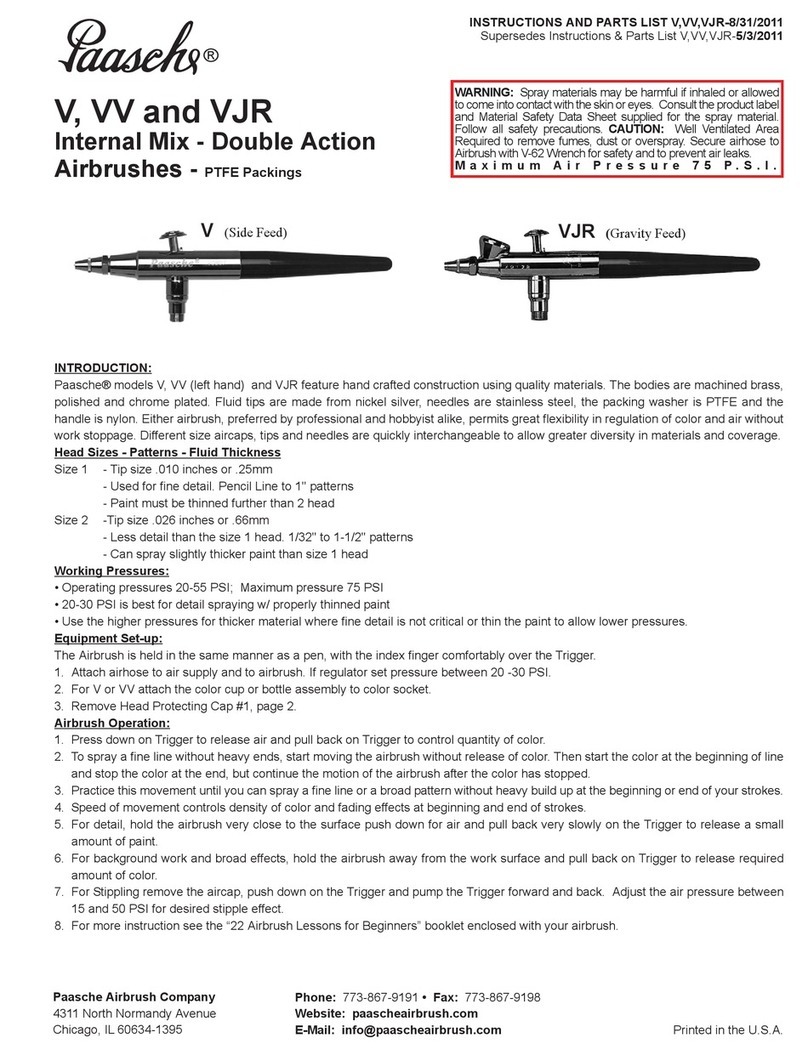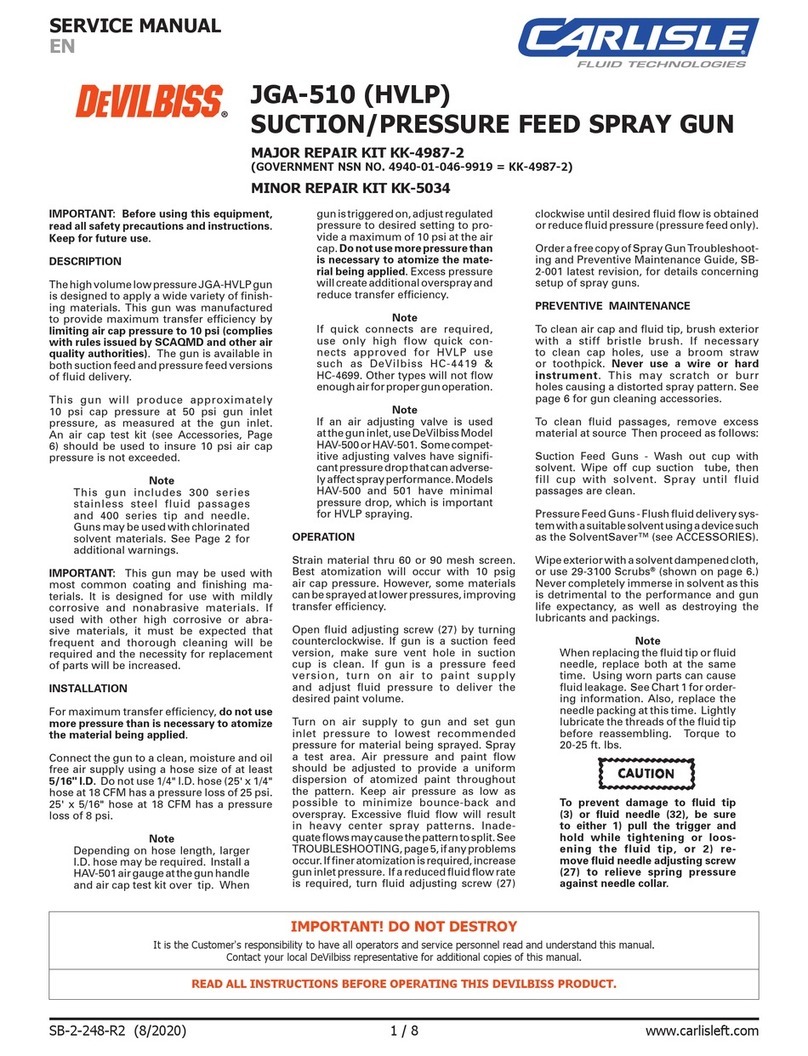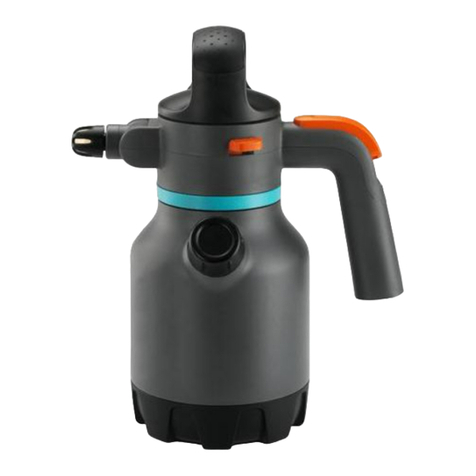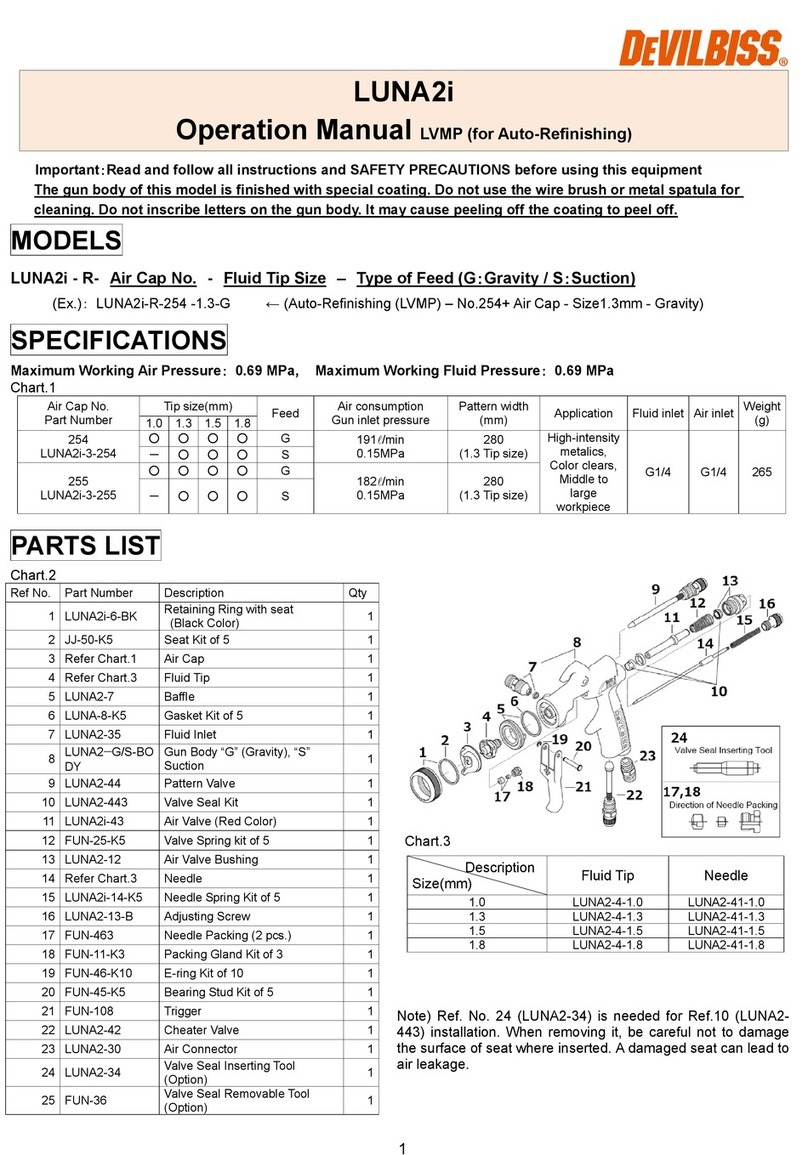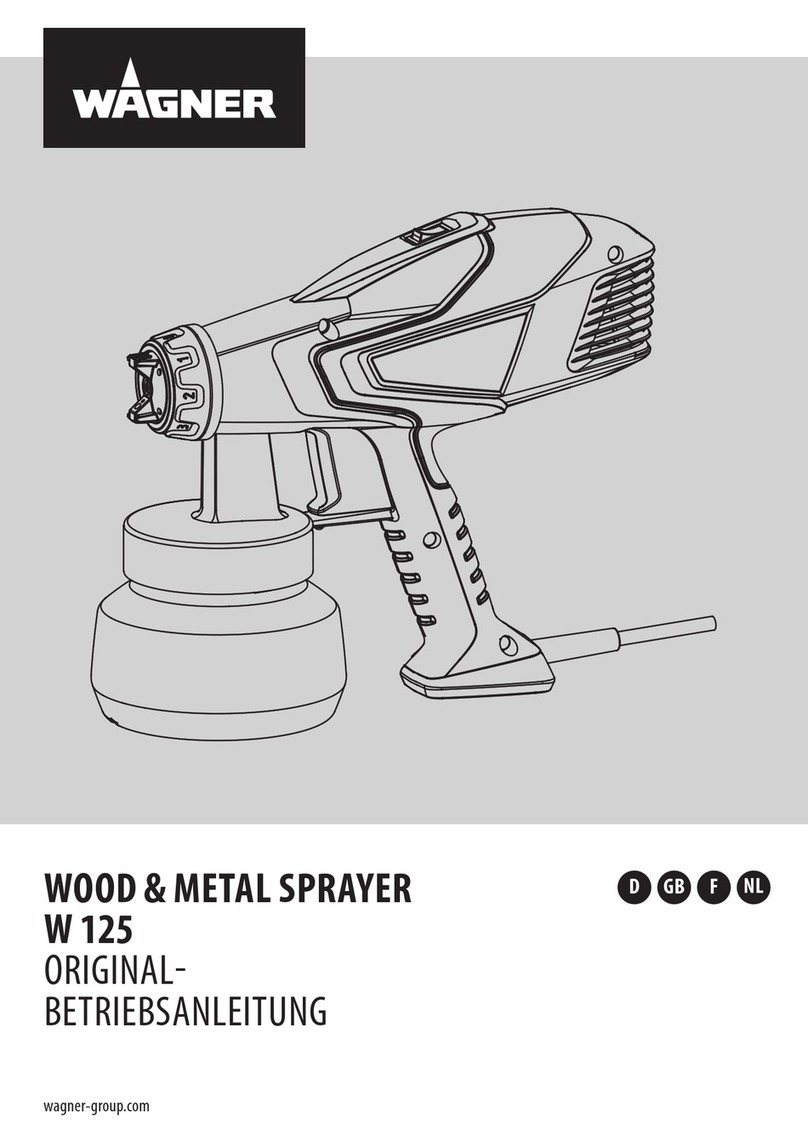
10 310–523
Operation
Pressure Relief Procedure
WARNING
INJECTION
HAZARD
The system pressure must be manually
relieved to prevent the system from
starting or spraying accidentally
. Fluid
under high pressure can be injected through the
skin and cause serious injury
. T
o reduce the risk of
an injury from injection, splashing fluid, or moving
parts, follow the
Pressure Relief Procedure
whenever you:
D
are instructed to relieve the pressure,
D
stop spraying/dispensing,
D
check or service any of the system equipment,
D
or install or clean the spray tip/nozzle.
1.
Lock the gun/valve trigger safety
.
2.
Shut of
f and lock-out the air to the pump.
3.
Close the bleed-type master air valve (required in
your system).
4.
Unlock the gun/valve trigger safety
.
5.
Hold a metal part of the gun/valve firmly to the side
of a grounded metal pail, and trigger the gun/valve
to relieve pressure.
6.
Lock the gun/valve trigger safety
.
7.
Open the drain valve (required in your system)
and/or the pump bleeder valve, having a container
ready to catch the drainage.
8.
Leave the drain valve open until you are ready to
spray/dispense again.
If you suspect that the spray tip/nozzle or hose is
completely clogged, or that pressure has not been fully
relieved after following the steps above,
very slowly
loosen the tip guard retaining nut or hose end coupling
and relieve pressure gradually
, then loosen completely
.
Now clear the tip/nozzle or hose.
Before Pumping Fluid
WARNING
MOVING
P
ARTS HAZARD
Keep hands and fingers away from the
priming piston, ram plate, pump fluid
inlet, and lip of the fluid container when
raising or lowering the ram and whenever the pump
is charged with air
. Moving parts can amputate a
hand or finger
. Follow the
Pressure Relief Proce
-
dure
at left before checking or repairing the ram or
any other part of the system and when shutting
down the system.
1.
Move the hand valve lever (30) to the center
position (OFF). Close the ram air regulator and
main air control valve.
2.
Move the hand valve lever to UP
. Open the main
air control valve and ram air regulator until the ram
starts to move upward. Let the ram rise to its full
height.
3.
Set a full drum of fluid on the ram base, slide it
back against the drum stop (if supplied), and
center it under the ram plate. See the T
ypical
Installation on page 9 and the Accessories sec
-
tion for drum clamps (80) that center
, hold, and
properly align the drum with the ram.
NOTE:
Do not use drums that have side bungs or
large dents with this ram. Rough bung openings or
large dents will damage the wipers or stop the ram
plate, resulting in a runaway pump.
4.
Move the hand valve lever to the DOWN position
and lower the ram until the ram plate is just ready
to enter the drum, then move the valve to OFF
.
Reposition the drum so the wipers will not hit the
drum lip, then open the vent valve (not shown) on
the ram plate.
5.
Move the hand valve lever to the DOWN position,
lower the ram plate until all air is forced out and
fluid comes out of the vent opening. Then move
the hand valve lever to OFF and close the vent
valve (not shown).
6.
Set the air pressure to the ram at 50 psi (4 bar).
Move the hand valve lever to the DOWN position.
Start the pump (open the bleed-type master air
valve and fluid dispensing valve). Let the pump run
until the system is primed and all air is forced out.
Close the bleed-type master air valve or fluid
dispensing valve to stop the pump.
NOTE:
Increase air pressure to the ram if the pump
does not prime properly with heavier fluids. If fluid is
forced out around the top wiper
, ram pressure is too
high and the air pressure should be decreased.
